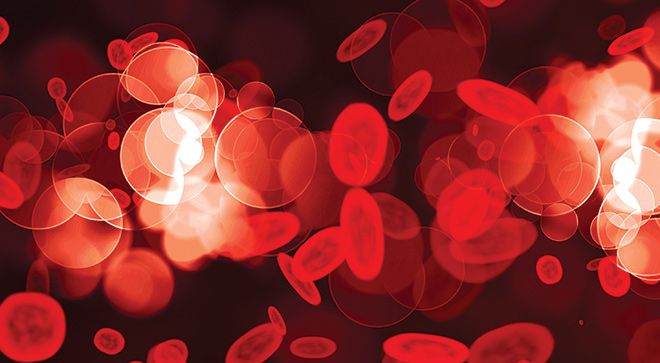5-Year Survival Data Showcases Long-Term Benefit With Nivolumab/Ipilimumab-Treated Metastatic NSCLC
Frontline nivolumab and ipilimumab combination therapy was associated with increased 5-year survivorship in patients with metastatic non–small cell lung cancer—regardless of PD-L1 expression.
Julie R. Brahmer, MD

A 5-year analysis of the CheckMate 227 trial (NCT02477826) revealed that combination nivolumab (Opdivo) plus ipilimumab (Yervoy) yielded durable long-term benefit among patients with metastatic non–small cell lung cancer (mNSCLC).
The findings, which were presented at the 2022 ASCO Annual Meeting, demonstrated a 5-year rate of overall survival (OS) was 24% in patients who received nivolumab/ipilimumab who had PD-L1 expression of at least 1%, and 19% in those with PD-L1 expression less than 1%, vs 14% and 7%, respectively, in patients who received chemotherapy. The immunotherapy combination also had a significantly higher duration of response (DOR) of 24.5 months for those with positive PD-L1 expression and 19.4 months for those with negative PD-L1 expression versus 6.7 months and 4.8 months with chemotherapy, respectively.
“Nivolumab and ipilimumab led to increased 5-year survivorship among these 5-year survivors and regardless of PD-L1 expression level,” Julie R. Brahmer, MD, director of the thoracic oncology program and professor of oncology at Bloomberg-Kimmel Institute for Cancer Immunotherapy at Johns Hopkins University Sidney Kimmel Comprehensive Cancer Center, said in her presentation. “Responses were maintained for greater than 5 years in over 40% of those who responded.”
The phase 3 CheckMate 227 stratified patients with stage IV or recurrent NSCLC who had no prior systemic therapy and were negative for EGFR mutations or ALK alterations by positive or negative PD-L1 expression. In the PD-L1-positive subgroup, 1189 patients were randomized 1:1:1 to receive nivolumab/ipilimumab, nivolumab alone, or up to 4 cycles of chemotherapy. In the PD-L1-negative subgroup, 550 patients were randomized 1:1:1 to receive nivolumab/ipilimumab, chemotherapy, or nivolumab plus chemotherapy.
Chemotherapy consisted of pemetrexed plus cisplatin or carboplatin every 3 weeks for patients with nonsquamous disease or gemcitabine plus cisplatin or carboplatin every 3 weeks for patients with squamous disease.
The primary end points were OS for the PD-L1–positive population and progression-free survival (PFS) in patients with a high tumor mutational burden. The OS was previously reported at a minimum follow-up of 29.3 months with a median of 17.1 months for nivolumab/ipilimumab versus 14.9 months with chemotherapy, with 2-year OS rates of 40.0% and 32.8%, respectively.2 With the 5-year analysis, OS benefit continued to be observed with a hazard ratio of 0.77 favoring nivolumab/ipilimumab (95% CI, 0.66-0.91).1
With all patients having stopped receiving immunotherapy for at least 3 years, the efficacy versus chemotherapy has persisted in patients regardless of positive or negative PD-L1 expression.Combined 5-year OS, PFS, and DOR rates were 22%, 11%, and 27%, respectively, for those who received nivolumab/ipilimumab versus 12%, 2%, and 3% for chemotherapy.
Among patients who survived for 5 years, median PFS was 59.1 months for PD-L1–positive patients and 60.7 for PD-L1–negative patients who received immunotherapy, versus 9.5 months and 24.9 months respectively for those who received chemotherapy. The median duration of response was not reached (52.6-NA) for PD-L1–positive patients and 59.4 months (18.0-NA) for PD-L1–negative patients, compared with 12.4 (5.6-24.4) and 15.2 (2.7-NA) for those who received chemotherapy.
“In patients that survived 5 years, improved outcomes were universally observed with nivolumab and ipilimumab versus chemotherapy irrespective of PD-L1 expression,” said Brahmer in her presentation. “The majority of patients treated with nivolumab and ipilimumab did not receive subsequent therapy, with approximately two-thirds of patients remaining treatment free 3 years after discontinuing treatment.”
In contrast, among those who received chemotherapy and survived for 5 years, only 22% of PD-L1–positive patients and 17% of PD-L1–negative patients received no subsequent systemic therapy.
No new safety signals were seen in this analysis. Quality of life (QOL) was measured by an EQ-5D assessment, which showed that 5-year survivors who received nivolumab/ipilimumab reported a QOL similar to the general United States population of 79.3, significantly above the lung cancer norm of 68.0.
“These long-term results from CheckMate 227 further support nivolumab and ipilimumab as an effective first-line treatment for patients with mNSCLC regardless of tumor PD-L1 expression level,” Brahmer concluded.
References:
1. Brahmer JR, Lee JS, Ciuleanu TE, et al. Five-year survival outcomes with nivolumab (NIVO) plus ipilimumab (IPI) versus chemotherapy (chemo) as first-line (1L) treatment for metastatic non–small cell lung cancer (NSCLC): Results from CheckMate 227. J Clin Oncol. 2022;40(suppl 17):LBA9025. doi:10.1200/JCO.2022.40.17_suppl.LBA9025
2. Hellmann MD, Paz-Ares L, Bernabe Caro R, et al. Nivolumab plus ipilimumab in advanced non-small-cell lung cancer. N Engl J Med. 2019;381(21):2020-2031. doi:10.1056/NEJMoa1910231
Workflow, Educational Tools Improve Use of Silicone Film to Prevent Radiation Dermatitis
April 25th 2024Tools to educate oncology nurses and patients on the use of Mepitel film to prevent radiation dermatitis has improved the workflow around its introduction to patients with breast cancer, as well as its application and maintenance.
Olaparib Plus Chemo May Not Improve Outcomes vs Chemo Alone in BRCA Wild-Type TNBC
April 23rd 2024Patients with BRCA wild-type triple-negative breast cancer treated with olaparib on a gap schedule with chemotherapy did not experience improved responses compared with chemotherapy alone in the neoadjuvant setting.




